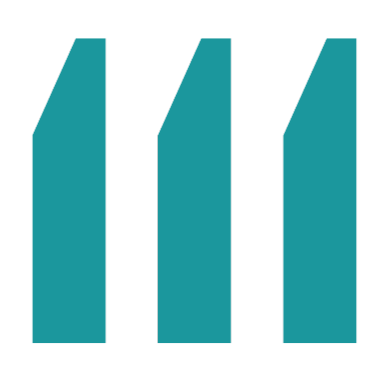We discussed the future of packaging with the one who observes it from the production side: the general manager of UCIMA (Italian Packaging Machinery Manufacturers Association) Mario Maggiani.
The present
What is the picture of the sector dedicated to packaging machinery?
Italian industry of packaging machinery manufacturers is a universe of 635 companies which in 2020 generated a turnover of 7.8 billion euros. Among the sectors supplied, the food sector is at the first place, accounting for 32.2% of the total turnover, followed by the beverage sector and the pharmaceutical and biomedical sector which represents 17.4%, for a total turnover of € 1.3 billion. Machines dedicated to primary packaging account for 53.2% of total turnover, while those for secondary packaging account for 18.8%.
Sustainability
To speak of sustainable packaging means to address a broad topic, touching various sectors, from design to logistics to recycling. What are the initiatives in your sector?
The sustainability theme has strengthened in recent years and brought a strong sensitivity throughout the pharmaceutical sector which has invested in an ethical development of packaging thanks also to the growing consumer interest in green issues. From the sharing of these values, initiatives are born not only from the downstream sectors but also from those who supply packaging machines. Precisely at the Association level we are defining more and more projects related to the theme of sustainability and ecological transition for companies in the sector.
Waste
Unsized boxes lead to drug waste. Is it possible that the administration methods will change in the future of packaging?
From the existing studies on the subject, waste is more related to personal behaviors. That’s precisely why the transition to more targeted methods of administration is also becoming the input for companies’ R&D. The fact remains that the issues of health and safety remain a priority for the Italian manufacturers of packaging machines and must also be functional to the issue of waste. Already today these companies are working on the theme of maximum flexibility of formats to arrive at increasingly customized packages.
Adherence to treatment
Adherence is one of the cornerstones of the medicine of the future. Can drug packagings help in any way?
Packaging is an important component of the product and plays a fundamental rolee within the customer experience. Marketing and design are modifying, amplifying and enhancing what primary packaging can do from its peculiar position of interface between the end user and the product, thus also assuming an important informative role. In the world of food, this phenomenon is already widely developed, so certainly the aesthetics of the packaging can affect adherence to the treatment.
Technology
Use of QC, RFID, NFC, smart packaging… is technology actually integrating with the world of packaging?
Our sector has technology in its DNA, it’s not a simple integration. From the point of view of companies, intelligent packaging improves logistics and traceability of products, as well as providing information on the state of conservation of the product; therefore, it is certainly a growing phenomenon. Currently on the market it is still a niche but in the long run it will become predominant given the innumerable sectors of possible application.
Ethical Packaging Charter
In 2015 the Ethical Packaging Charter was born, the result of a shared reflection between Edizioni Dativo and Politecnico di Milano. It is divided into 10 values that should accompany the manufacturers towards a more conscious future of packaging. The Italian Institute of Packaging, an associative network of reference for the packaging supply chain, has shared its principles since its inception, so much so that it subsequently acquired the Ethical Charter as a tool for developing a new ‘system culture’.
The recognition of the deep value of the principles set out, together with the desire to give the supply chain a super partes institutional voice capable of stimulating authoritative visions and reflections on ethical packaging design, led to the establishment, in 2020, of the Ethical Packaging Charter Foundation.
10 values of the Ethical Packaging Charter
- Responsible – This is packaging seen as responsibility shared by everyone towards everyone else: in its design, manufacturing and application. Responsible packaging is the bearer of quality, that combines environmental protection with respect for all users’ needs.
- Balanced – Where packaging is in its right balance: optimised for what is needed. Packaging is balanced when it is intended and designed with the right balance with the content and it is the result of what it is necessary for its correct dissemination.
- Safe – It is the healthy and safe packaging that protects people and communities throughout its whole lifecycle. Safe packaging fully accounts for its traceability, throughout the supply chain; it is safe in terms of protection of its content and the non-contamination of the same; it is safe during transport and use throughout its entire lifecycle.
- Accessible – It is the user-friendly packaging: where packaging is capable of “easily” explaining itself to the user. Packaging is accessible when it is user-friendly and intuitive, and thus takes into account every customer’s right to be able to approach, understand and use a product
- Transparent – It is the packaging that builds an immediate relationship with its recipient. Packaging is transparent when it is sincere, when it tells the truth in full compliance with the legal standards, and it does so plainly. Through its transparent quality it manages to build up a relationship of trust with the recipient.
- Informative – It is the packaging that ensures the best information, both useful and necessary. Informative packaging respects legal standards, bears all information useful to know about the contents and its packaging, their use and disposal.
- Up-to-date – Where packaging is constantly in tune with the society of which it represents the values. Packaging mirrors the culture of our society and in turn contributes to creating the same. It does so through messages, that are transmitted via its shape, its graphics, its symbols: it thus transfers values and messages and takes part in the evolution of contemporary social life.
- Forward-looking – It is the packaging that stands in a fair relationship with its own future. Packaging is capable of intervening today in terms of possible future effects. The choices that define the today’s packaging cannot develop starting from an immediate advantage but must consider the consequences that derive from the initial choices.
- Educative – It is the packaging that, as a widespread object, knows how to take charge of its educational function. Packaging is a tool that is fully part of everyone’s daily lives, integrated in a constant dialogue with its recipient. Hence, it has an extensive educational potential: its dissemination makes it a powerful tool also in this regard.
- Sustainable – It is the packaging which respects the environment. Packaging is sustainable if designed in a holistic manner, fully balanced with the product and its use, so as to optimize its overall environmental performance.


